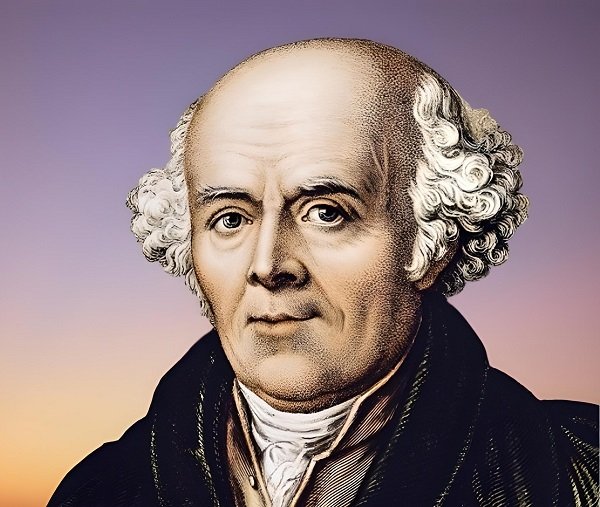Homeopathy: A Historical Overview
While homeopathic medicine may not boast the ancient lineage of Chinese or Indian traditions, it is among the longest-standing systems of complementary and alternative medicine treatment to emerge from Europe. Its roots trace back to Samuel Hahnemann (1755–1843), a German physician who played a transformative role in the birth of homoeopathy.
This article offers a comprehensive overview of homeopathic medicine, shedding light on its visionary founder and the remarkable evolution of this healing approach. Exploring Hahnemann’s life and legacy helps us understand the homeopathic principles that continue to guide millions seeking safe, natural medicine options for wellness today. From the early foundations to its modern relevance, homeopathy cures not just illness, but also redefines the meaning of holistic care.
The Early Life of Samuel Hahnemann - Father of Homeopathy
Samuel Hahnemann, born in Meissen, Germany, received his medical degree from Erlangen University in 1779. Like many physicians of his time, he endured financial struggles early in his career. However, his passion for reforming medicine never faltered. His frustrations with ineffective treatments led him to seek new methods of healing. This journey ultimately gave birth to homeopathic medicine, rooted in a philosophy that prioritizes individual symptoms and gentle, effective care. Understanding these humble beginnings helps frame the origins of homeopathic healing and the personal convictions that inspired Hahnemann’s contributions to the world of holistic treatments.

The Birth of Homoeopathy
Hahnemann's breakthrough came from experimenting with cinchona bark (quinine), used to treat malaria. He discovered that cinchona induced symptoms in healthy individuals that mirrored the disease it treated. This led to the discovery of the principle of similars, or “like cures like,” which remains the foundation of homeopathic medicine today.
This pivotal realization paved the way for the inception of a novel medical paradigm, which Hahnemann documented in 1796 through the publication of the "Essay on a New Principle for Ascertaining the Curative Power of Drugs." Building upon this foundation, in 1810, he further enriched the homeopathic literature with his seminal work, "The Organon of the Healing Art." This comprehensive exploration seeks to unravel the intricate stages of Hahnemann's revolutionary insights, tracing the roots of homeopathy and examining the transformative impact of his contributions on the broader landscape of medical thought. From the early experimentation with cinchona to the foundational principles outlined in "The Organon," Hahnemann's journey reflects the genesis and maturation of a medical system that continues to influence healing practices to this day.
The Principle of Similars
At the heart of homeopathic medicine lies Hahnemann's core idea: a substance causing symptoms in a healthy person can treat similar symptoms in the sick—a concept known as the principle of similars, or “like cures like.” This idea marked the birth of homeopathy and became the basis of its unique healing system. Hahnemann believed that homeopathic remedies should reflect the very symptoms they aim to heal, supporting the body’s natural recovery process.
An example often cited is Edward Jenner’s cowpox vaccine to prevent smallpox, illustrating how similar agents can spark healing—an idea also central to homeopathic treatment. This approach paved the way for homeopathic healing as a form of alternative medicine treatment, focusing on the root cause rather than just symptoms.
Today, homeopathy uses range from chronic conditions to everyday wellness, offering natural medicine through safe, gentle, and individualized care. Trusted sources like Mayweed Remedies a homeopathic medical store in Vadodara, continue to offer top homeopathic medicine, reflecting the ongoing relevance and benefits of homeopathy in holistic healthcare.








Contrasting Homoeopathy and Conventional Medicine
During Hahnemann’s era, the contrast between homeopathic medicine and conventional medical practices was striking. Homeopathy, with its deeply holistic treatments, focused on hour-long, detailed consultations that explored every aspect of a patient’s physical, mental, and emotional health. This personalized, patient-centered approach reflected the core homeopathic principles—treating the individual as a whole, not just the disease.
In comparison, conventional medicine of the time emphasized the clinico-pathological correlation, relying heavily on symptom analysis and even post-mortem findings to understand disease. This method lacked the individualized attention that defined homeopathic healing.
The divergence in these therapeutic methodologies shaped the evolution of medical thought. While conventional medicine leaned toward standardized diagnosis, homeopathic treatment offered a more natural medicine path—compassionate, comprehensive, and rooted in the benefits of homeopathy.
Hahnemann's Distinct Focus
In contrast to the dominant focus on pathology and conventional diagnostic methods of his time, Hahnemann remained firmly committed to the core homeopathic principles. Rather than concentrating on complex disease classifications or the conventional naming of illnesses, his approach in homeopathic medicine emphasized understanding the patient as a whole—physically, mentally, and emotionally. This holistic treatment philosophy set homeopathy apart as an alternative medicine treatment that valued individual symptoms over generalized pathology.
Under Hahnemann’s guidance, homeopathic healing was seen as safe, simple to understand, and deeply patient-centric. His belief in the body’s natural ability to heal through tailored homeopathic remedies fostered trust and contributed to the rising popularity of homeopathy.
This exploration into Hahnemann’s vision highlights why homeopathy uses remain relevant today—not only for its gentle and natural approach but also for its enduring legacy in offering homeopathic solutions that prioritize the individual.
The Dosage Dilemma
A key point of debate between homeopathic medicine and conventional medical practices was Hahnemann’s use of highly diluted remedies. He believed in administering homeopathic remedies in doses so minimal that they produced only the slightest symptoms of the illness being treated. By the fourth dilution, the ratio could reach 1:100,000,000—an idea met with skepticism by the medical community of his time.
Critics, including Oliver Wendell Holmes, mocked these extreme dilutions, famously suggesting they would require the waters of ten thousand Adriatic seas. However, Hahnemann defended this practice through his concept of potentization, a unique method involving vigorous shaking, which he claimed preserved and enhanced the therapeutic power of natural medicine.
This process became a defining aspect of homeopathic principles, reinforcing the system's identity as a gentle yet powerful form of alternative medicine treatment. Despite criticism, this patient-friendly approach remains a cornerstone of homeopathic healing and continues to be embraced in modern holistic treatments.
Evolution of Homoeopathy
Samuel Hahnemann, the founder of homeopathic medicine, believed that this approach could offer cures for a wide range of illnesses through its homeopathic principles. However, as homeopathy sought broader acceptance, especially within the orthodox medical community, many of his early followers refined these claims to align with evolving scientific and clinical standards.
Institutions such as the American Institute of Homeopathy, established in the late 19th century, played a crucial role in bridging homeopathic treatment with conventional practices. This era marked a significant shift, as allopathic and homeopathic practices began to intersect. Some conventional physicians, acknowledging the benefits of homeopathy, even began to adopt homeopathic remedies as part of their alternative medicine treatment offerings.
This period in the history of homeopathy reflects a meaningful exchange of ideas, where both systems influenced one another in the pursuit of holistic treatments. The gradual integration of natural medicine into mainstream care highlights the dynamic evolution of medical thought—one that continues to shape modern approaches to homeopathic healing and patient-centered care.
Revival and Popularity
The revival of interest in homeopathic medicine saw a significant surge during the 1960s and 1970s, especially in countries like the United States. This era marked a turning point in the history of homeopathy, as the use of homeopathic remedies in the U.S. increased by an astonishing 500% over just seven years, peaking by 2002. Simultaneously, surveys in the United Kingdom showed a growing number of people turning to or having previously used homeopathic treatment.
This period highlighted a rising global shift toward alternative medicine treatment and holistic treatments, reflecting a broader acceptance of natural medicine. The renewed popularity of homeopathic solutions underscored public interest in safer, gentler, and more patient-centric approaches to healthcare.
The 1960s and 1970s thus became a defining chapter in the renaissance of homeopathic healing, reaffirming its relevance and impact on modern wellness.
Conclusion: A Timeless System of Healing
From Hahnemann’s early experiments to its modern-day application, homeopathic medicine has earned its place in global healthcare. Its principles — safety, simplicity, and individualized care — continue to resonate with those seeking non-invasive, natural medicine solutions.
Whether you're new to homeopathy cures or looking for trusted advice, Mayweed Remedies stands by your side as a dedicated homeopathic medical store in Vadodara, offering authentic products and guidance rooted in tradition and trust.
